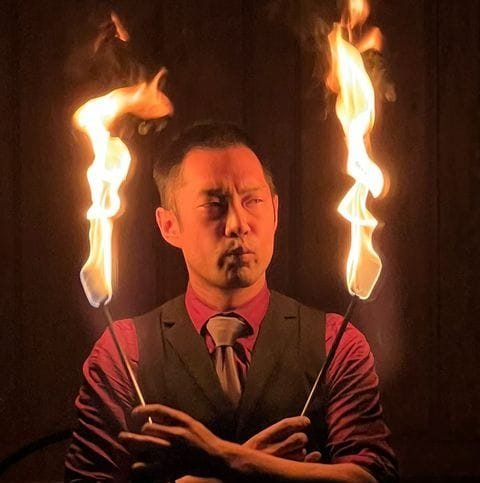There is a slightly different intro to this episode as Guy is in Kansas being medievally wrestled by Jessica Finley. Hear the noises here!
Onto the interview: David Ito is a fire eater, an epee coach and former kendo player who plays with longswords now, based in Toronto, Canada. Of course, his main claim to fame, top of the resume, is he appeared on episode 25 of this show, back in December 2020. With the world reopening David is living the life of a literary swashbuckler: fighting with swords, hanging out with glamorous show people, and attending all the scandalous parties.
To find out more about David and his work, you can find him on Instagram @ittoswords, or the Toronto Historical Combatants at www.torontohistoricalcombatants.ca.
Our conversation covers David’s training routine – does he really still do 100 burpees every morning? We talk about keeping track of progress and the overlap between training for epee and for historical martial arts.
When we last spoke on episode 25, David’s best idea he hadn’t acted on yet was to start his own club. Well, he’s done it! He explains his goals for the club and where it fits within the sword community in Toronto.
David has also got into the tournament scene since we last spoke, with great success. He talks about how he trains and even if you don’t have as many hours in the week to train as he does, he has some advice on where to focus if you have limited time.


